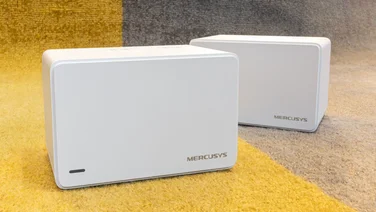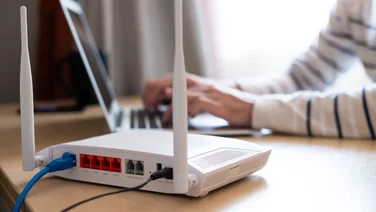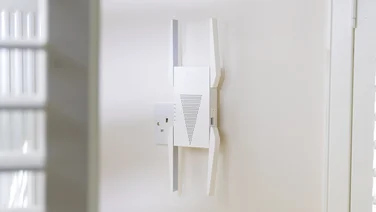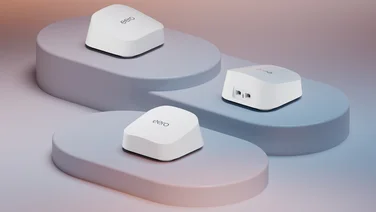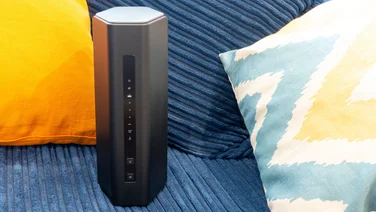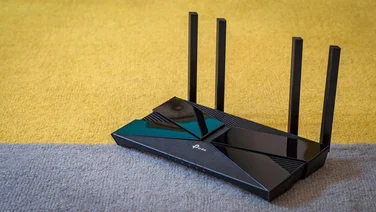To help us provide you with free impartial advice, we may earn a commission if you buy through links on our site. Learn more

The TP-Link TD-W8980 is a sleek black router made from glossy plastic. This makes it a magnet for fingerprints but as you likely wont be tinkering with it too often this shouldnt be too much of a problem. It’s an inconspicuous design, although not as unobtrusive as other rivals due to its three external 5GHz wireless antennas. The router has mounting points on the base so you can mount it out of the way, and the 5GHz antennas are replaceable; inside are two internal antennas for the 2.4GHz band.
The router is able to operate simultaneously on 802.11n 2.4GHz and 5GHz bands, with a theoretical throughput of 300Mbit/s for each. The web interface is well laid out and theres an easy to follow Quick Setup program if youre using the ADSL2+ modem for your internet connection. Otherwise, one of the four Gigabit Ethernet connections can double as a WAN port if you want to connect the router to a cable or fibre modem. This is useful if you find yourself switching from ADSL in the future.
Both the 2.4GHz and 5GHz networks have an-easy-to-identify default SSID, and its easy to change the settings for each individually. Thankfully, both networks are password-protected out of the box and on the bottom of the router youll find the default network password and login for the web interface. We were disappointed to see that theres no guest network support.
On the back of the router is a physical Wi-Fi on and off switch and a WPS connection button to make connecting devices easier. On the front is a bank of lights that show the internet connection status, which ports are connected and which wireless networks are currently broadcasting.
All the usual features, such as port forwarding, are easily accessible in the router’s web interface. Its also possible to set up network file and printer sharing using the routers two USB ports. However, youll need to check if your printer is compatible first on this list.
The web interface otherwise provides helpful instructions on how to map attached storage devices using FTP or SMB protocols. Alternatively, you can also set up a DLNA-based media server. Theres no physical eject button on the router so youll need to access the web interface to eject your storage drives before pulling them out.
When using our laptops Intel Dual Band Wireless N-7260 adaptor, performance on the 2.4GHz network was underwhelming in both our near and far tests. At 10m we saw transfer speeds of 14.2Mbit/s and at 25m throughput dropped to a poor 7.9Mbit/s. Things looked up considerably when we tested the 5GHz band. Throughput of 116.5Mbit/s at 10m is reasonable for an inexpensive router, but 93.2Mbit/s is very impressive, even before you take into account the router’s price.
A TP-Link TL-WDN3200 dual-band USB adaptor (£20 from www.viking-direct.co.uk) didnt improve performance much. At 10m it managed 119.4Mbit/s and 94Mbit/s at 25m, so only a fraction faster than our laptops built-in card. The included driver installation CD also didnt have drivers for Windows 8.1 and with Windows own plug-and-play drivers the USB adaptor wasnt able to see the 5GHz network. We had to download newer drivers from TP-Links website.
The TP-Link TD-W8980 is a reasonably priced ADSL2+ router, and its web interface is well thought out. Its wireless speeds over 5GHz are excellent for an inexpensive router, but if youre planning on connecting devices on the 2.4GHz band, such as older laptops or smartphones, you should look elsewhere.

